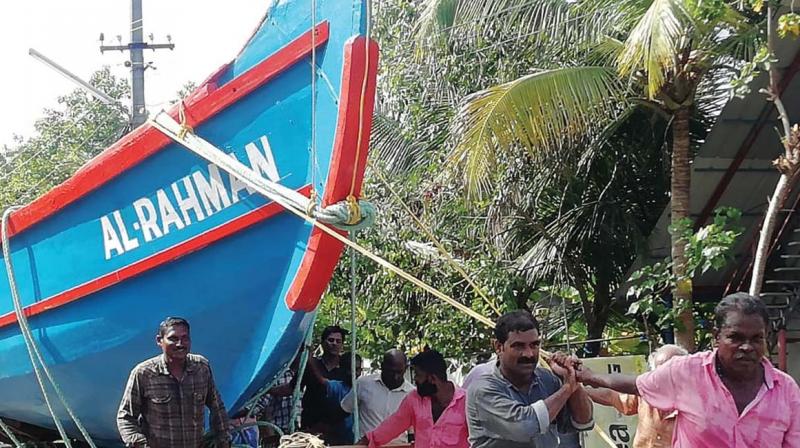Alappuzha: Chakara may well be a nostalgic exuberance

ALAPPUZHA: With the trawling ban in force concerns of fishers here loom large over the elusive Chakara.
Even after monsoon stirred the sea, the fisherfolks say there is no sign of the mudbank so far this year, unlike past.
For fishers from Ambalappuzha to Cherthala, in the 1970s and 80s, Chakara was not only a mere annual phenomenon but a celebration of life that brings in a mess of opulence.
But, at the time of climate change, this phenomenon of the sea has also taken a beating. The celebration, thrill, hop-es, and all fell in line. And it has of late beco-me part of Malayali’s nostalgic exuberance.
Joy C. Kambakkaran, a leader with All India Matsya Thozhilali Federation, says the sea so far has shown no sign of Chakara. It should be stirred well by the monsoon pressure so that the mud bank can form on the shore.
The phenomenon used to take place while water along with mud and silt from Vembanad Lake flows down to the sea. The water carries the "nutritious sedime-nt" from Cherthala to the composed parts of the coast between Ambalappuzha and Arthunkal.
“Last year, Chakara had hit in some places of Punnapra, and Challi coasts, but this year no sign so far,” he said.
Gangadharan, 66, a traditional fisherman from Purakkad, recalls how his birthplace catapulted to fame during the arrival of Chakara when he was young.
During the 60s and 70s, Purakad was the area where the sea usually create mud bar during monsoon and fishers across the district would gather here to celebrate Chakara.
He also observes that the introduction of modern fishing techniques turned the sea into a graveyard of juvenile fishes.
Studies, however, carried out by the National Institute of Oceanogra-phy (NIO) say Chakara is resident of fluid mud driven by the monsoon. The mudbank forms with a higher quantity of nitrate and phosphate enhancing the primary production of phytoplankton and zooplankton in the seawater.
It attracts plankton-feeding small fishes. Subsequently, large fishes that feed on them will flock to the area in search of food.

